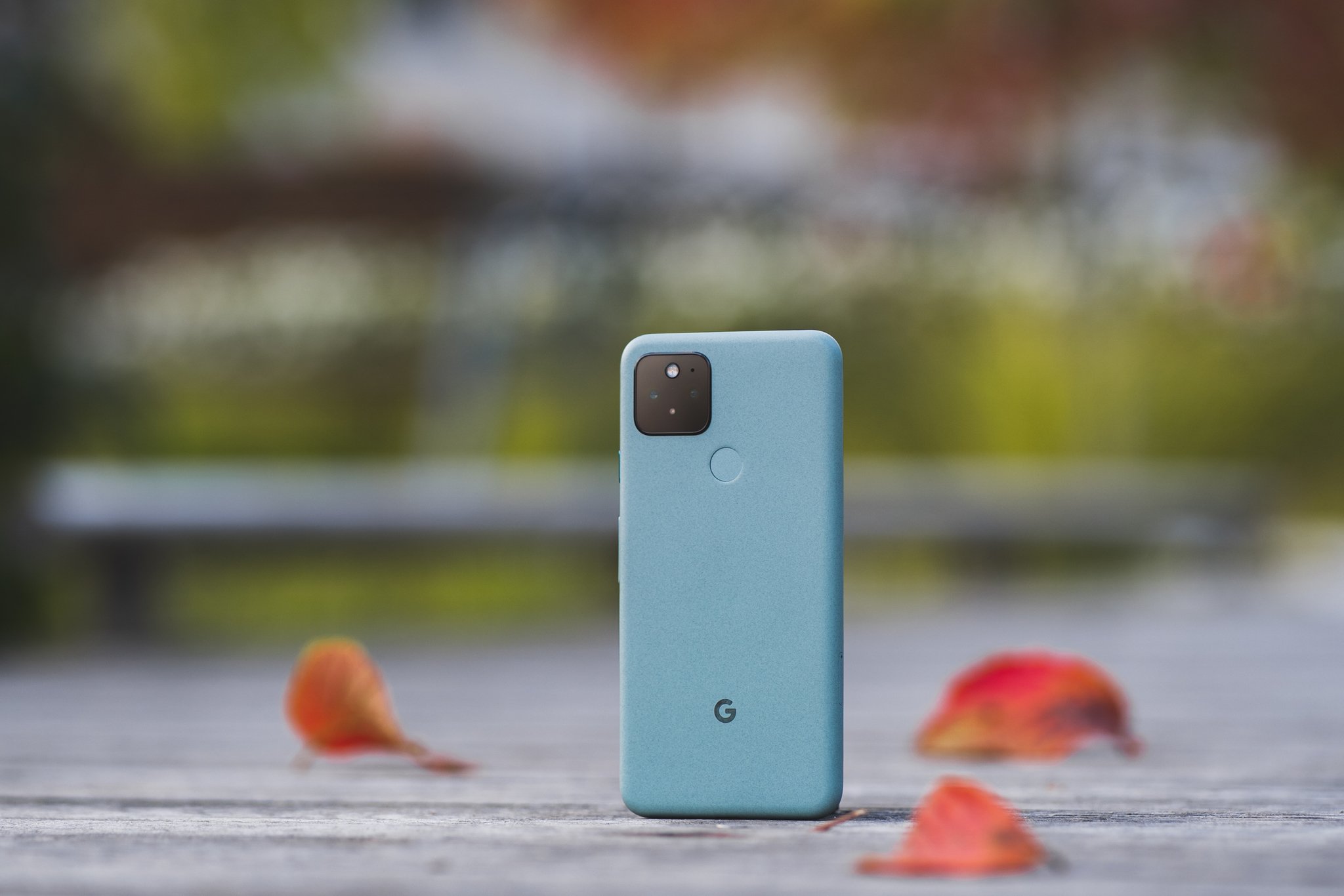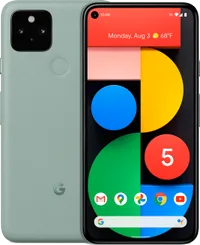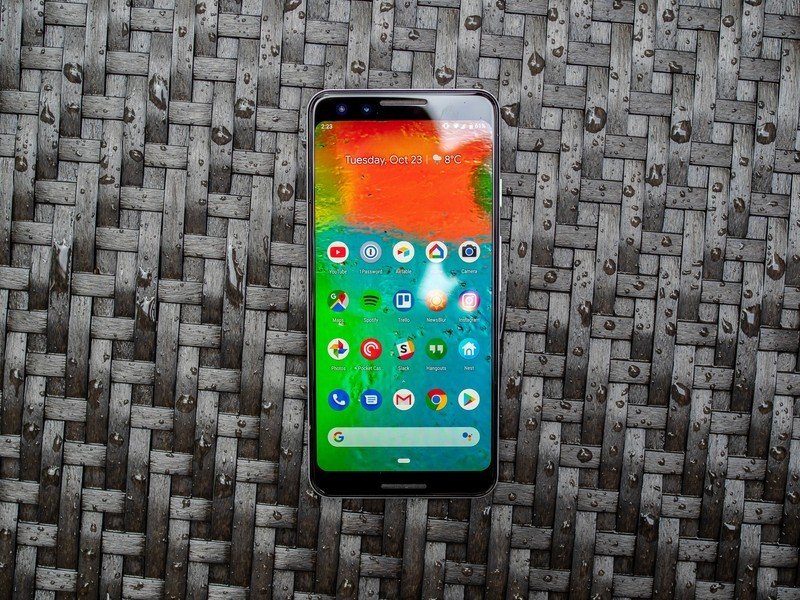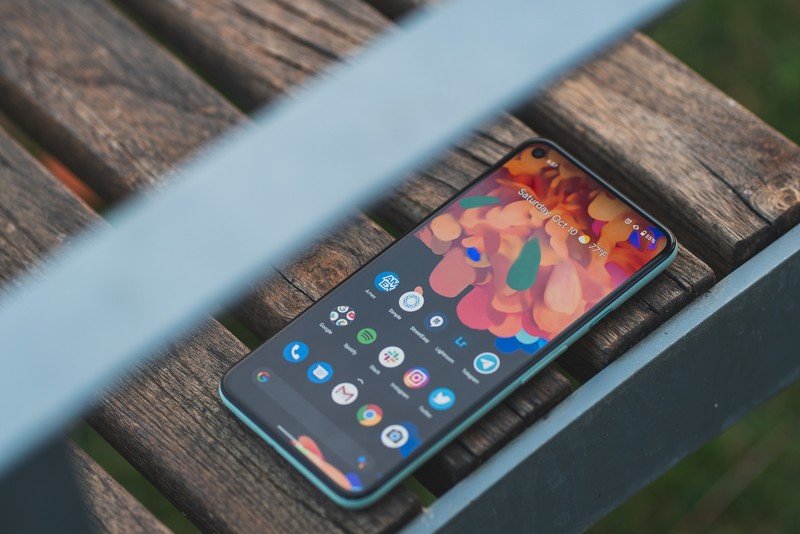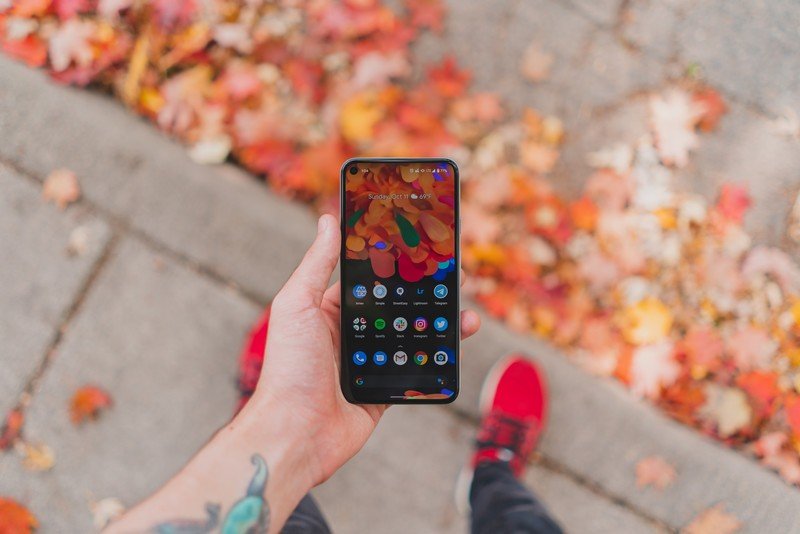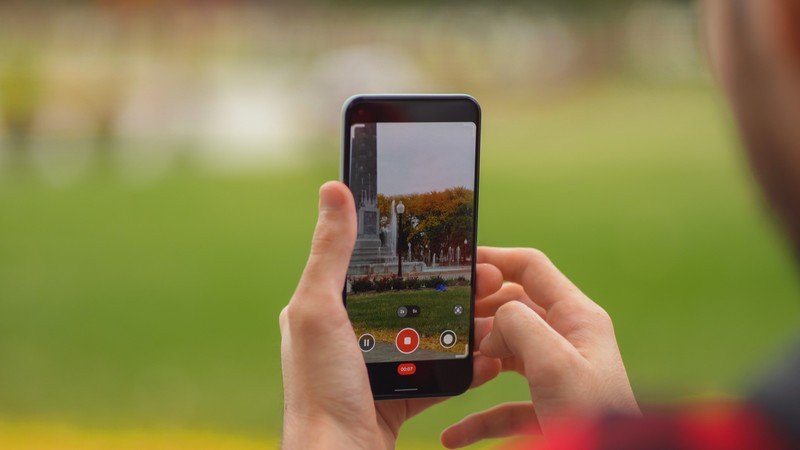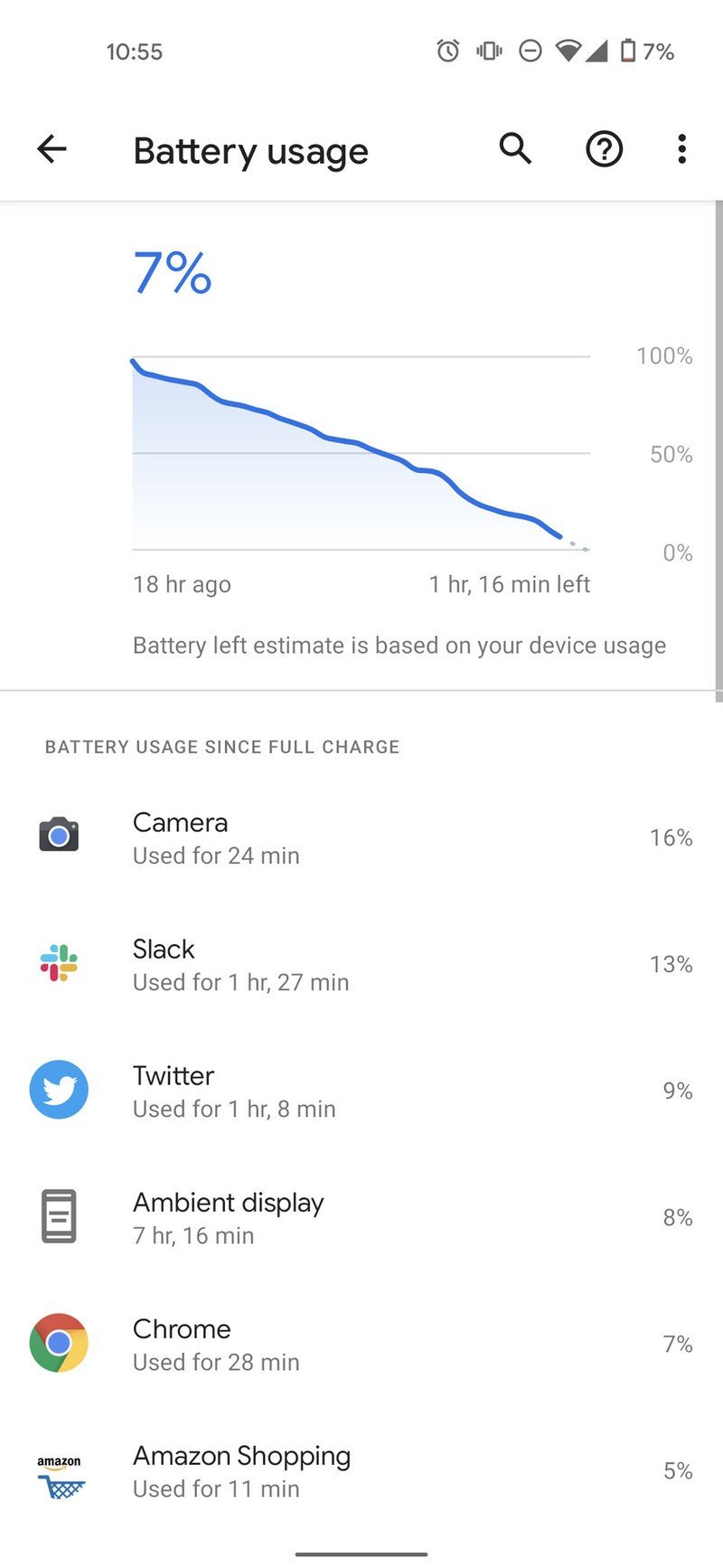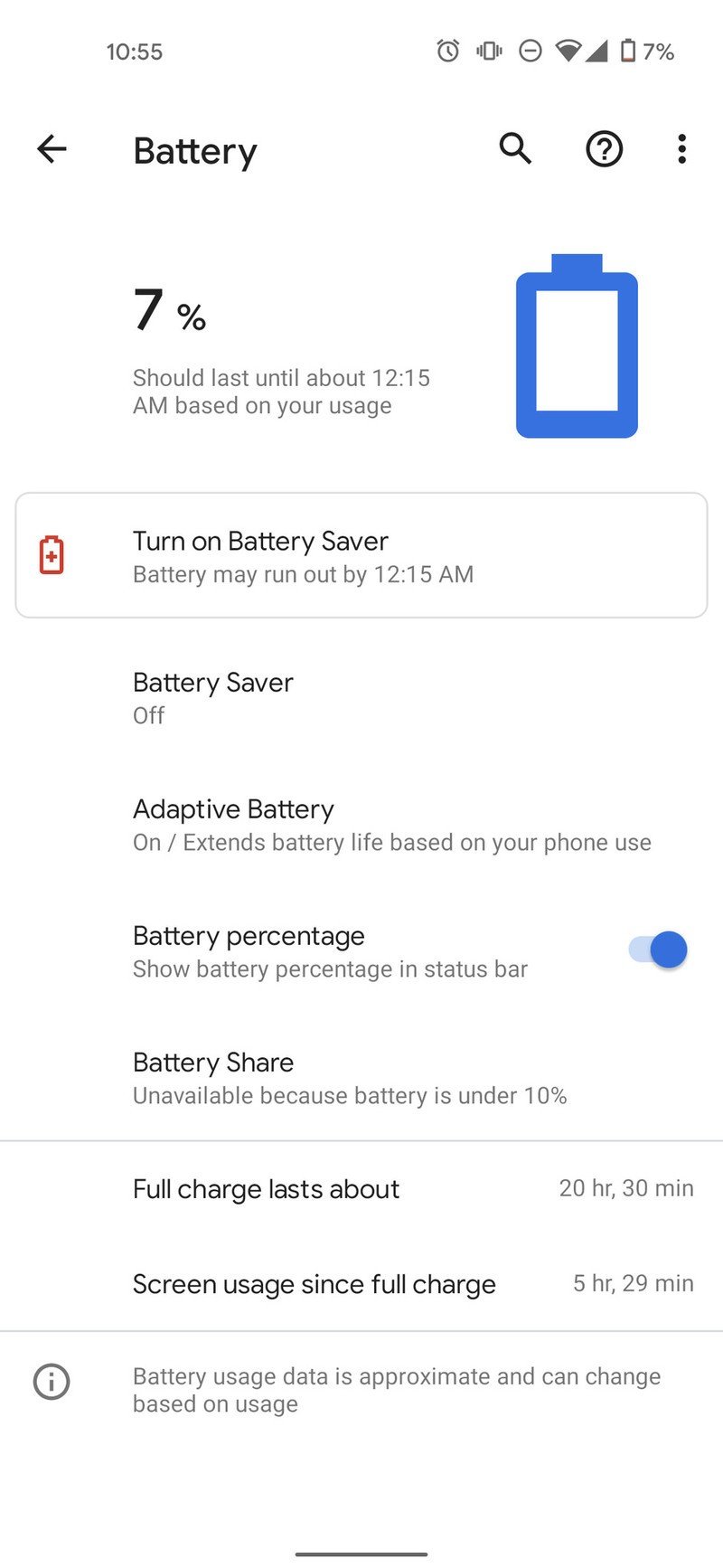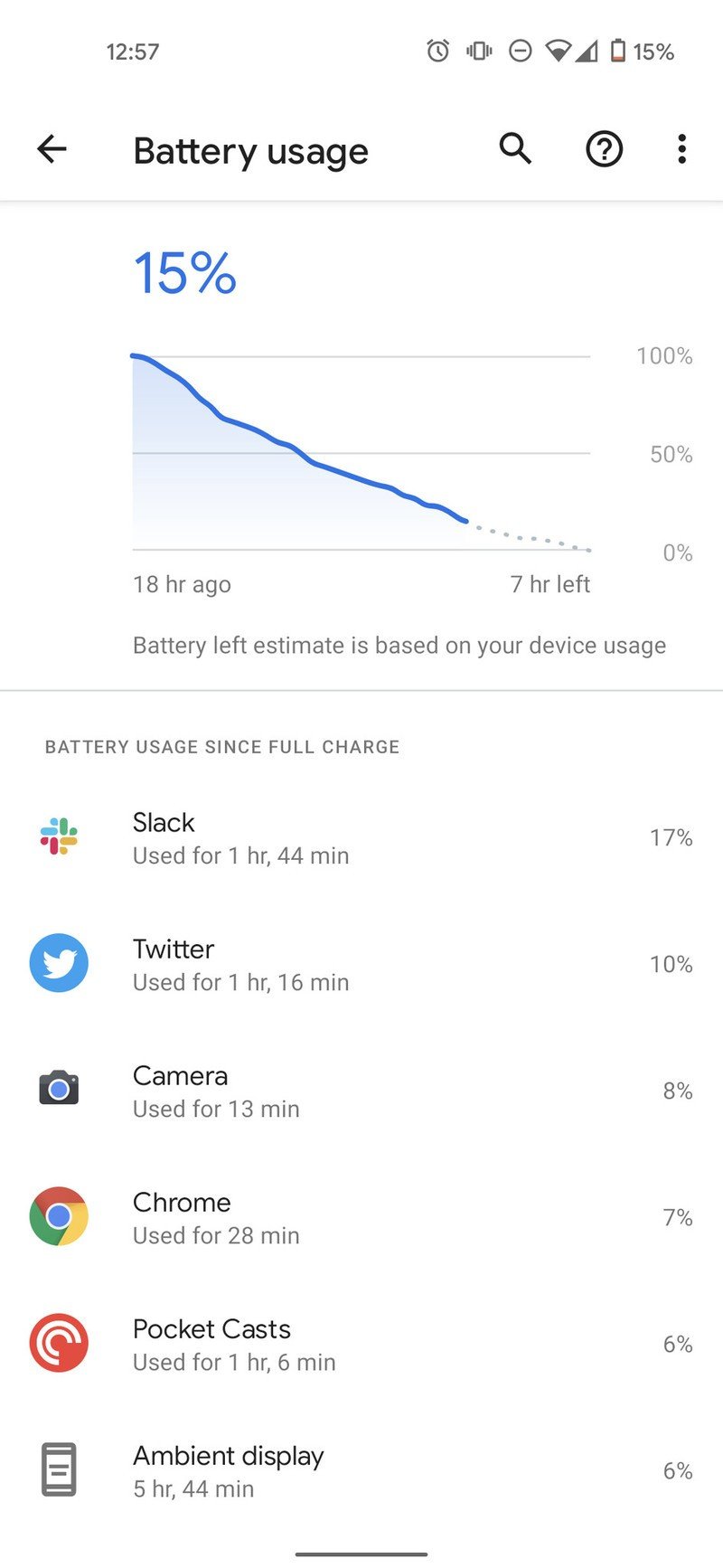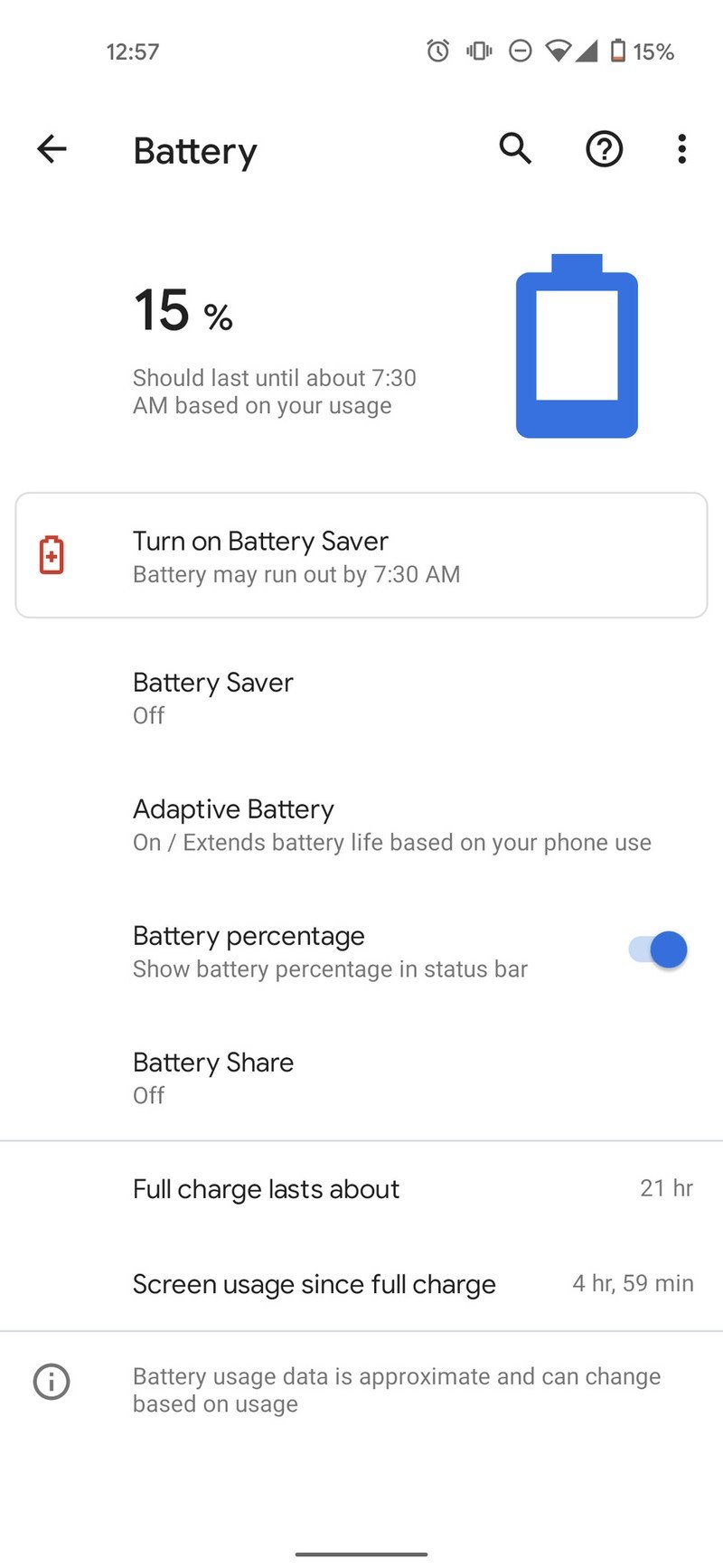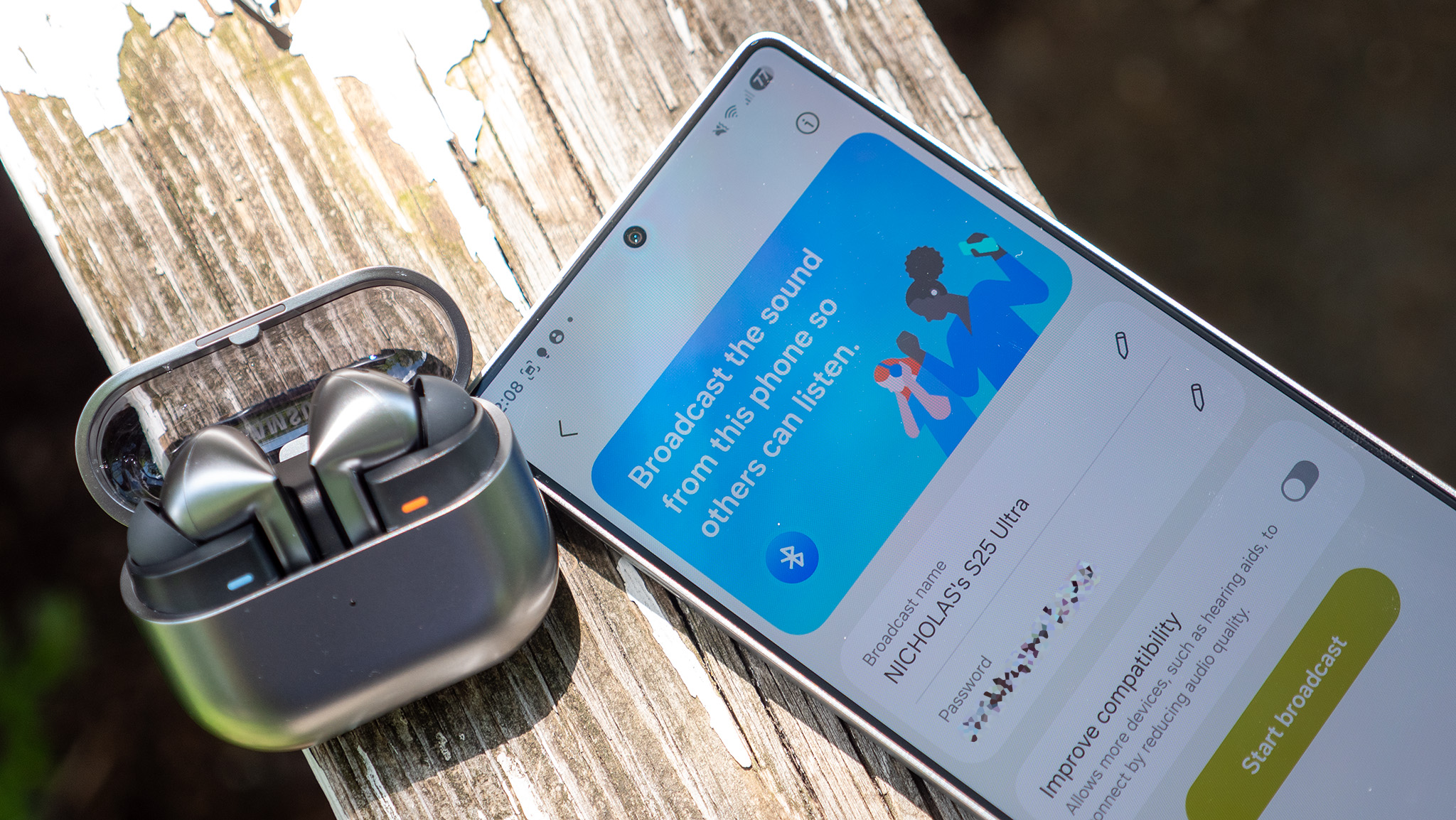Since 2016, when the original Pixel debuted, it has felt like Google just needed one more year, and then another, to make the brand a household name — to be broadly considered a success.
And judging by the Pixel's outsized influence in the Android smartphone market relative to its reported sales numbers, I'd say Google can celebrate that success. Its phones are synonymous with great cameras, with innovative and useful software features, and with playful if divisive approaches to smartphone design.
But influence doesn't sell phones, and Google's Sisyphean journey to bring its own Android experience to more people just hasn't really worked. At the high-end, Pixel phones could never compete with Samsung, LG, Huawei, and OnePlus (among others) on sheer brute-force specs; and on the value side, Pixels cost too much to attract the value-conscious buyers of Motorola and Nokia products. As the classic Stealers Wheel song goes, they were stuck in the middle with you.
In 2019, though, Google seemingly found its footing with the Pixel 3a, a $399 handset that refactored how the company builds phones. Its success, and the Pixel 4 series' subsequent failure, made it clear what needed to happen: as nearly every smartphone maker went higher and higher, exploring new materials, form factors, and technologies, Google wasn't going anywhere.
In 2020, still a year away from the ambitious Pixel 6 series, the middle was exactly where Google wanted to be.
Google Pixel 5: Price and availability
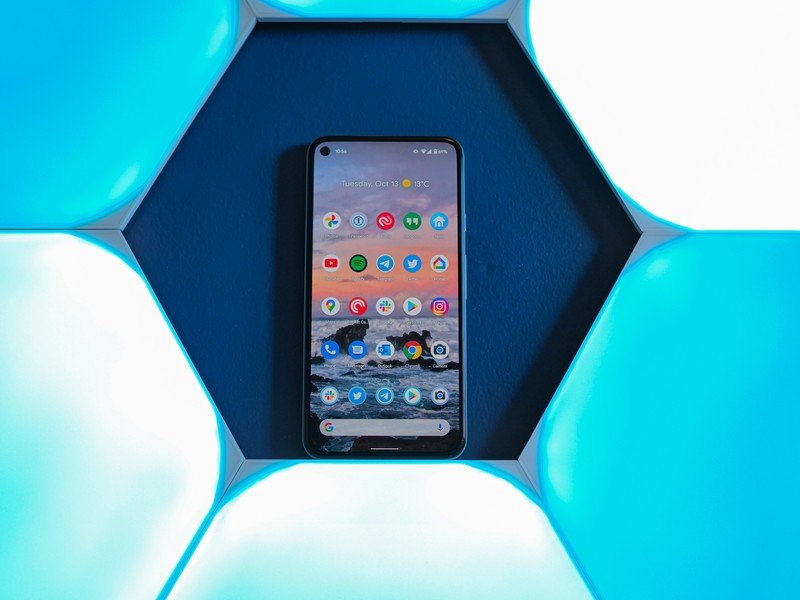
If you're able to find it on sale, the Pixel 5 usually costs around $500 USD and is available in two colors, Sorta Sage (green) and Just Black, and in one size configuration — there is no Pixel 5 XL, unless you count the cheaper Pixel 4a 5G (you shouldn't). It's also limited to a single storage size, 128GB, with no option for expansion through microSD.
The Pixel 5 launched in nine countries: Australia, France, Germany, Ireland, Japan, Taiwan, the United Kingdom, the U.S., and Canada. Regional availability varies — for instance, brand new Pixel 5s are easier to come across in Europe than North America. In the U.S., for instance, Google has already sold through
Get the latest news from Android Central, your trusted companion in the world of Android
This review was written primarily using a Canadian unlocked Sorta Sage Pixel 5 connected to 5G on Telus, a national carrier. It was connected to Wi-Fi most of the time and a mix of LTE and 5G when out of the house.
As of October 2021, just weeks away from the likely launch date of the Pixel 6, the Pixel 5 is available at discounted prices at some retailers, as opposed to the $700 launch price. However, owing to the current global chip shortage new Pixel, new Pixel 5 models are difficult to come by.
Google Pixel 5: Design and performance
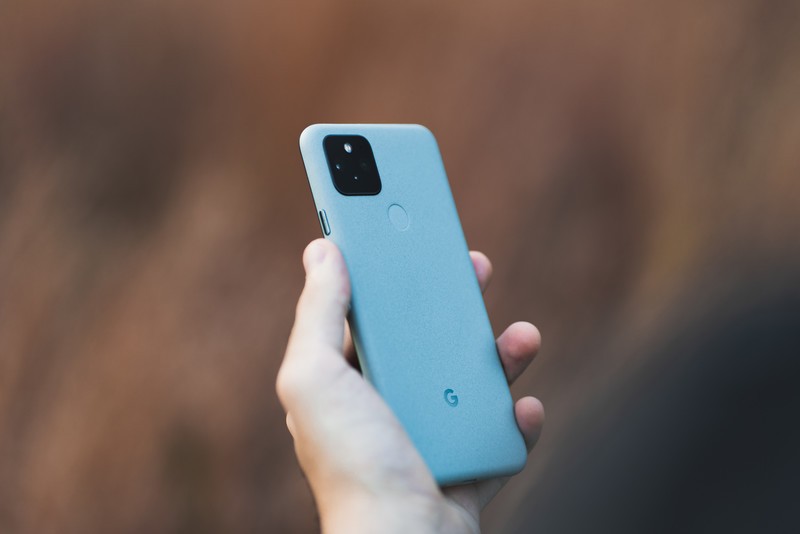
| Category | Google Pixel 5 |
|---|---|
| Display | 6-inch OLED Full HD+ (2340x1080) 90Hz refresh rate Gorilla Glass 6 |
| Operating System | Android 11 (upgradeable to Android 12) |
| Processor | Qualcomm Snapdragon 765G |
| Rear Camera 1 | 12.2MP primary camera f/1.7 aperture OIS |
| Rear Camera 2 | 16MP ultra-wide camera f/2.2 aperture |
| Memory | 8GB of RAM |
| Storage | 128GB |
| Battery | 4,080 mAh |
| Charging | 18W wired charging 15W wireless charging 5W reverse wireless charging |
| Security | Fingerprint sensor |
| Connectivity | Sub-6 5G (worldwide) Sub-6, mmWave 5G (US) Wi-Fi 5 |
| Colors | Sorta Sage, Just Black |
| Dimensions | 144.7 x 70.4 x 8mm |
| Weight | 151 grams |
The Pixel 5 is made of aluminum, which I feel like I haven't said about a phone in a very long time (I miss you, HTC). But this aluminum frame is unlike anything I've held before: the back and sides are painted over with a porous, slightly coarse material, which has thankfully so far been resistant to scratches and fingerprints.
Holding the Pixel 5 is one of my favorite things about using it: it's weighted perfectly, with just the right amount of heft to feel substantial without burdening your pocket. Its narrow frame engenders a comfort in the hand, so typing feels natural and consistent, while the flat Corning Gorilla Glass 6 on the front is raised ever-so-slightly away from the frame, ensuring solid taps on the screen.
The phone's dimensions are only fractionally different from the Pixel 3 and Pixel 4, but thanks to improvements to thickness and materials, it feels significantly better in the hand.
We're talking millimeters of difference between the Pixel 5 and its Pixel 4 and Pixel 3 predecessors, but minor changes in material, weight, and dimensions add up to a significant difference. After just a few days, this quickly became my favorite Pixel ever to just pick up and use.
Some of that praise needs to be heaped at the display, or at least the decision to get rid of the bezels above and below the screen. With very minor breaks between the 6-inch AMOLED display and the frame, the Pixel 5 looks and feels modern in ways its predecessors didn't, and that Google was able to hit such a considerable screen size, even at a tall 19.5:9 aspect ratio, without increasing the overall size of the Pixel 3 and 4, feels like a win.
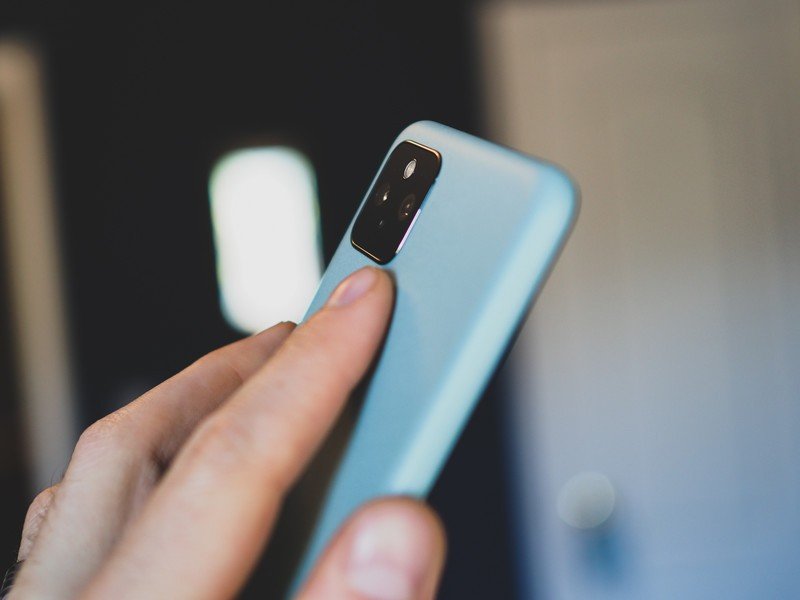
Of course, those decisions come with three major trade-offs, and I'm not happy with any of them. The first is that the Pixel 5 doesn't have the face unlock and Soli sensors of the Pixel 4.
It's nice to have the fingerprint sensor back, even if it comes at the cost of face unlock.
The latter I can live with — no one will miss Motion Sense, I promise — but I thought Google's implementation of secure 3D face unlock, and the relatively widespread adoption across the developer community, heralded good things for the future of Android biometrics. But here we see Google prevaricate in the name of aesthetics (and, according to spokespeople I talked to, cost) and revert to a rear fingerprint unlock.
That fingerprint sensor is good in a classic way, and works perfectly. Instead of using an in-display fingerprint sensor, which is slower and less secure, Google made the decision to put experience before spec, and in this case, I think it was the right move. Still, I miss how quickly the Pixel 4 unlocked.
The second trade-off is the loss of the wide-angle front-facing camera from the Pixel 3 series. I loved this addition to the Pixel in 2018, and thought it made it the best phone for taking selfies, period. In 2019, with all of the sensors crowding the top of the Pixel 4, Google combined the 75-degree and 97-degree fields of view into a single still-wide 87-degree camera. With the Pixel 5, that's been reduced to 80-degrees, so if you're someone like me who prefers taking wider selfies, this change is going to feel like a setback of sorts.
The third trade-off, which is probably going to be more significant for some people, is the reduction in sound quality over previous Pixel phones. Famously, the Pixel 2 and Pixel 3 featured dual front-facing speakers, and they were loud enough, and even bassy enough, to rival the best in the industry. With the Pixel 5, Google still claims its phone has dual speakers, but the front-facing element is now hidden behind the display, using a transducer projecting through the glass.
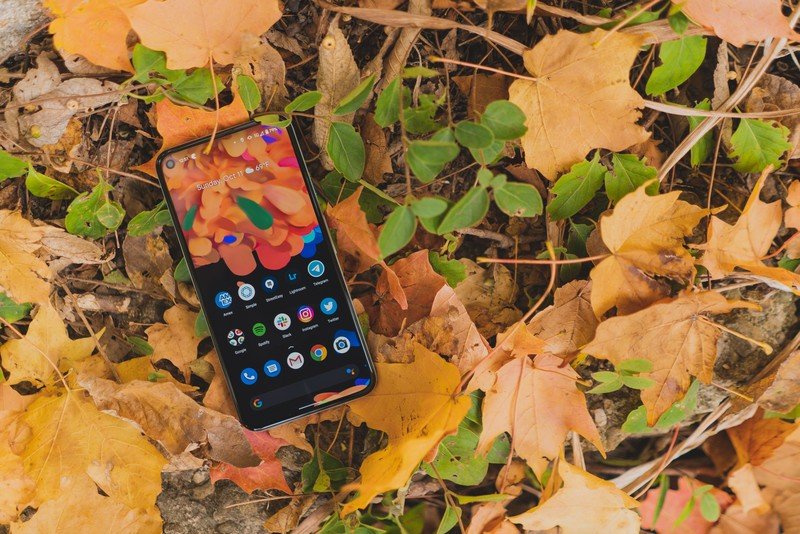
The sound is thin and relatively quiet, which forces the downward-facing speaker to work twice as hard. Cover up that bottom port and the phone barely makes a peep, even at the highest volume, and comparing the sound output to the Pixel 3 or Pixel 4, or even any modern flagship from Samsung or OnePlus, makes it clear Google took some liberties with the driver itself. There's a boominess to the sound that borders on distortion, veiling the midrange and treble. It's Google's weakest speaker in years, and a total disappointment.
There are only a few nagging problems with the Pixel 5, and none of them are the obvious ones.
I'm getting these gripes out of the way early on because they're relatively minor and they're really among the only ones I have about the phone. Returning to the display, the 6-inch OLED panel is of very high quality, calibrated well with accurate-looking colors and a lack of banding or blue tinge that you get with some panels in this price tier. It doesn't get quite bright enough for my liking in direct sunlight — certainly dimmer than the Pixel 4 series — but it's fine in most situations, and I'll take that compromise in exchange for the expansive screen real estate in a smaller body, especially with the faster 90Hz display.

There's a part of me that's disappointed Google didn't increase the Pixel 5's refresh rate to 120Hz after having luxuriated in that additional silkiness with the OnePlus 9 Pro and Galaxy S21 Ultra this past year, but given the Pixel 4's awful battery life, I'm not surprised Google didn't push any display metric boundaries.
Let's turn our attention to the other elephant in the room, the decision to step down from a Qualcomm Snapdragon 800-series chip to the Snapdragon 765G the Pixel 5 shares with its Pixel 4a 5G counterpart (as well as the OnePlus Nord, LG Velvet and Wing, and others). Paired with 8GB of RAM, I wouldn't blame you for being skeptical about Google's assertion that this mid-range chip, which has roughly the same compute power as the Snapdragon 845 found in the Pixel 3, is good enough for its top-of-the-line Pixel.
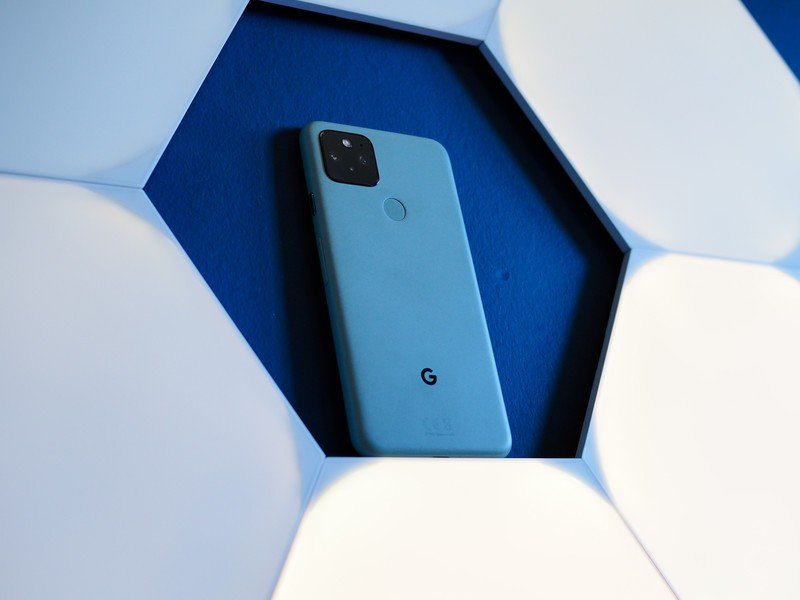
Let me put those fears to rest: the Snapdragon 765G is great. It's great in every other phone we've tried it on since mid-2020, and it's even better here. There's so much legroom remaining in today's flagship phone chips that it often feels like that old adage about how humans only use 10% of their brains; unless you're going out of your way to stress your phone all the time, there's no way you're taking full advantage of a chip like the Snapdragon 888 in today's most expensive handsets.
This isn't meant to apologize for Google's decision, either; I stress tested the crap out of this thing. I used it side by side with the Samsung Galaxy S20 FE, which is a mid-tier phone with a far more technically powerful Snapdragon 865, and the Pixel kept up but for a couple of occasions where apps took a beat longer to load. (For what it's worth the Pixel has 8GB of RAM compared to the FE's 6GB.) I even tried it next to the OnePlus 8T, and you know what? It did fine. I'm not saying the Pixel 5 wins by any means, but it keeps up, and that's impressive.
Source: Hayato Huseman / Android Central
You will notice a few instances where the Snapdragon 765G lags behind even 2019's Snapdragon 855: photo processing speeds. While the cameras, as you'll see next, are still as good as ever, Google's putting a lot of pressure on the phone's brain to turn frames into photos, and you'll likely notice that pulling up one of those computationally-heavy photos takes a few more beats right after taking it.
I did play a few games on the phone, and everything from PUBG Mobile to Dead Cells to Oddmar played identically to any other flagship — smoothly. The only potential caveat is that because the bezels around the phone are so slim, you may find yourself, as I did, with accidental touches when cradling the Pixel in both hands.
One final thing before we move on: it's refreshing to acknowledge that the Pixel 5 is the first premium phone from Google without any showstopping issues at launch. After the original Pixel's software bugs, the Pixel 2 XL's display problems, the Pixel 3's memory issues, and the Pixel 4's atrocious battery life, it's a relief to see Google release a product free of drama. This phone works, and it works as it should.
Google Pixel 5: Cameras
Portions of this section were written by Hayato Huseman
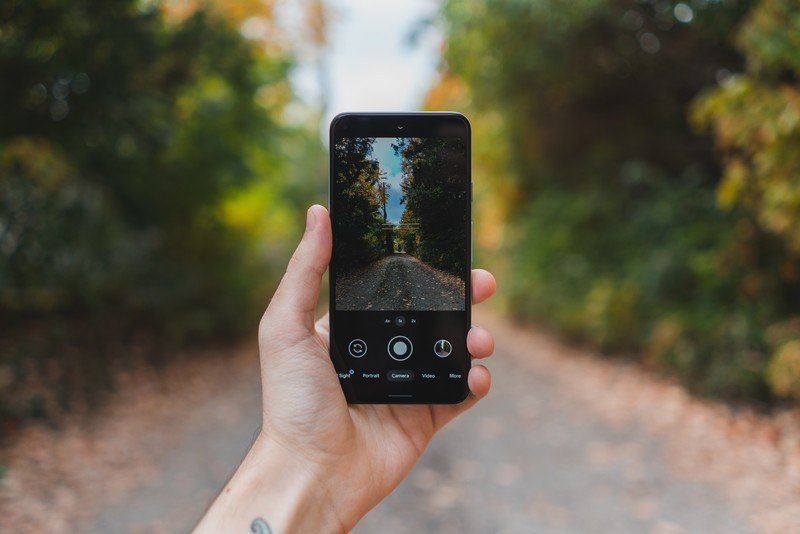
Pixels are cameras first. That's been the adage since the Pixel 2 and it continues to be the case now. But when the company proved that it could port the vast majority of its camera performance to the $399 Pixel 3a in 2019, the question on my mind became, does camera hardware even matter?
That answer with the Pixel 5 is... complicated. The phone has the same 12.2MP primary sensor that Pixel phones have had for four years, but once again Google's tweaked the output pipeline to satisfy what users are craving today: contrasty, warm photos that are easy to share on social media. The adjustments are subtle but welcome, and I still like the photos on the Pixel 5 better than virtually any other device. But it's also clear that Google's hit the software limits of what this relatively small phone sensor can pull off in hardware.








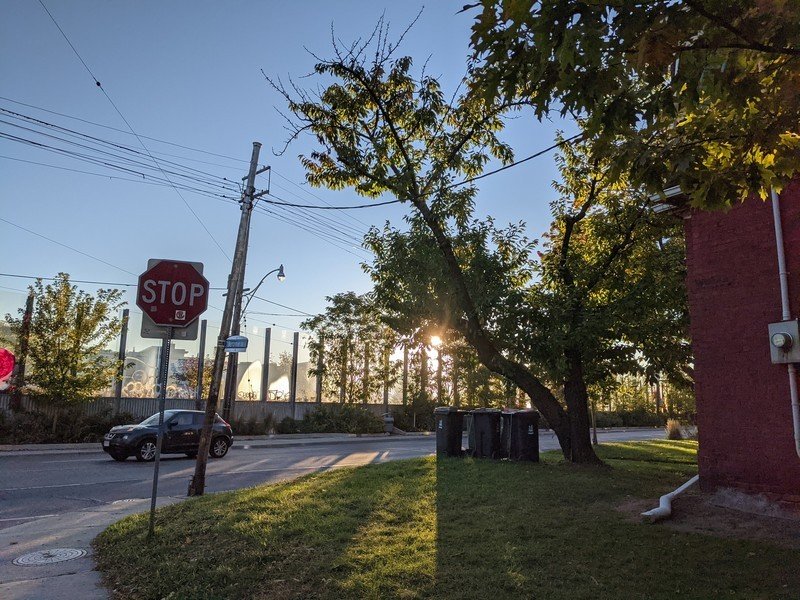


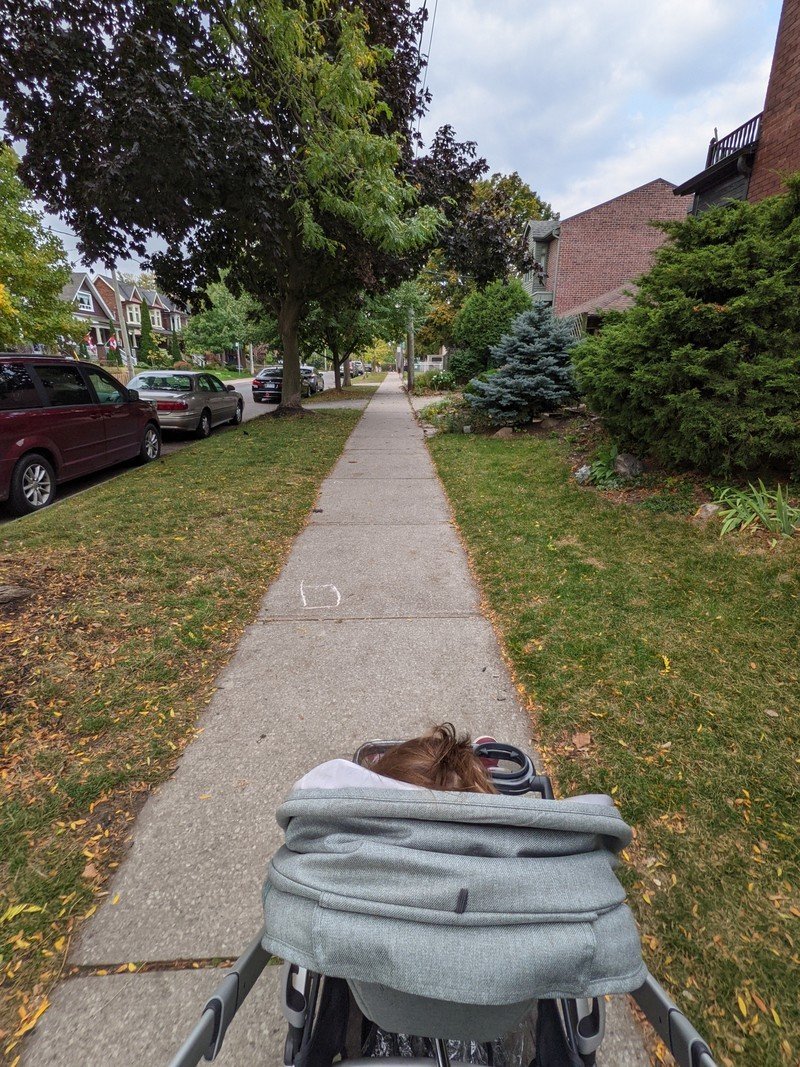
To its credit, Google didn't fix what wasn't broken: in good lighting, the photos taken on the Pixel 5 are mostly identical to those of the Pixel 4. Ever-so-slightly warmer, as mentioned, but you won't notice the differences unless you're looking for them. What that means is you're getting among the best, most consistent photo quality in almost any lighting condition and of any subject.


In particular, Google takes care to retain facial detail in portraits; it doesn't eliminate shadow detail to get a brighter image; it doesn't ramp up color saturation when you're taking a photo of your dinner; and despite the name, HDR+ doesn't make landscapes look cartoony or fake. It may not sound like much, but you can take for granted Google's processing will make the right decisions, from exposure to contrast to saturation to highlights to segmentation, in almost every scene.
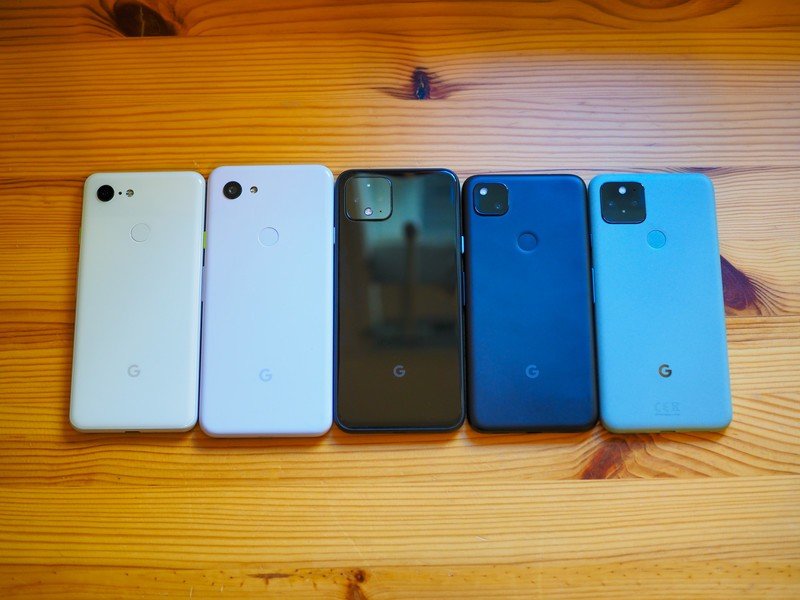
There are a few improvements to note this time around over previous Pixels. Google has added Night Sight to the main camera mode, which means you no longer have to explicitly activate the Pixel's low-light mode to get the most out of your shot. Google told me that it was "incredibly difficult" to do this properly, likely since finding the threshold between "regular" multi-frame photography, as Google does it, and the "extended" multi-frame photography of Night Sight is more challenging than we realize. Either way, it's a relief not having to care about toggling night mode, and the photos themselves look better than ever.
Photo quality isn't much better on the Pixel 5 than earlier Pixels, but they're warmer overall, and low-light photos are less noisy.
That's right: Google once again managed to improve its low-light results using the same sensor and lens combination as before. The company said it made improvements to the Night Sight algorithms that allow it to reduce noise even further, retain detail in subjects, and ensure colors are more accurate. In my testing, the results were almost identical to the Pixel 4 in areas of low light — outdoors at night with the subject lit by a street lamp or the moon — but much better in ultra-low light, as in a pitch-black room. The Pixel 5 did a better job keeping focus on a subject and keeping noise down.






The Pixel 5 also benefits from Night Sight portraits, where the phone is able to determine a foreground subject well enough to carve it out and blur the background. I had very mixed results here, and the success was largely determined by how much ambient light was available to the sensor. If you're sitting in a room lit by a few bulbs, Night Sight portraits should turn out well; outdoors, or in rooms with meager lighting, I'd just let regular Night Sight do its thing.
The Pixel 5 also debuts Google's new Portrait Light features, which exist in two places: the camera app itself and, during post-production, in the Google Photos app. It's important to make this distinction, as confusing as it is, because only the Pixel 5 right now benefits from both.
Here's a demo of Portrait Light on the Pixel 5, which I think is a really interesting and underrated addition. The effect can be stark or subtle, but it rarely crosses the line into artifice, and that's to Google's huge credit. pic.twitter.com/ga7XhC7FFjHere's a demo of Portrait Light on the Pixel 5, which I think is a really interesting and underrated addition. The effect can be stark or subtle, but it rarely crosses the line into artifice, and that's to Google's huge credit. pic.twitter.com/ga7XhC7FFj— Daniel Bader (@journeydan) October 14, 2020October 14, 2020
Portrait Light is not a new concept; the iPhone X debuted several pre-canned Portrait Lighting effects, like Stage Light, Contour Light, and others. But Google takes things to a new and very accessible level, since it's possible to achieve the two most popular styles, stage, and contour, with little effort.
Taking a photo in Portrait Mode automatically enables Portrait Light and optimizes it to the extent Google thinks is necessary for the scene (Google says it also applies Portrait Light to faces taken in regular mode, but to a lesser extent). The effect can be jarring, largely because lighting faces artificially is tricky (if you've ever had studio photos taken, or watched the behind-the-scenes of a YouTube video, you know how much equipment is involved) and phone sensors are typically too small to capture enough data to make adding light a fool's errand.



But as Google successfully showed with HDR+ in landscapes, and Night Sight in dark scenes, it can use machine learning to figure out just the right amount of light to add to a face without it seeming artificial. Most of the time, it just works. And if you're not happy with it, you can head into the Google Photos app and change the severity of the lighting or where the shadows in the scene sit.
I was consistently impressed with Portrait Light and its flexibility. Given that Pixel phones already take the best portrait photos in the Android ecosystem by dint of their ability to retain facial detail without oversharpening, Portrait Light just reinforces that lead.
Here's the confusing part: as part of an update in late 2020, the Pixel 4, 4 XL, and 4a gained the ability to apply Portrait Light in-camera. In addition, Portrait Light editing of existing photos arrived on all Pixels starting with the Pixel 3.
I should also mention that, despite my complaints about a narrower field of view, the selfie camera on the Pixel 5 is still one of the best in the business. Every mode that is available to the rear cameras — Night Sight, Portrait, and Portrait Night Sight, and Portrait Light— is also on the front, but video capture is limited to 1080p.
Elsewhere in the camera, there are two other additions and one removal worth talking about. Gone is the 2x telephoto lens of the Pixel 4, replaced by a fan-service ultra-wide lens. Why didn't Google just add an ultra-wide the way Apple did with the iPhone 11 Pro? Who knows — cost was likely the biggest factor — but it's an interesting and welcome change nonetheless.


Google justifies the change by saying the Pixel's Super Res Zoom feature is good enough that, at 2x, you won't be able to tell the difference between the Pixel 5 and the Pixel 4, which isn't true. Images shot at 2x on the Pixel 5 have much less detail and generally look more artificial — more digital — than on the Pixel 4. Makes sense. But would I rather have an ultrawide for dramatic landscape shots over the reduction of telephoto zoom quality? Absolutely.
The ultra-wide lens on the Pixel 5 won't win any awards for quality, sharpness, or reduction in barrel distortion, but it's a truly lovely addition to the Pixel camera arsenal, and long overdue. Google did a great job calibrating the ultra-wide to match the color science of the primary sensor, and overall it's a pleasure to use.
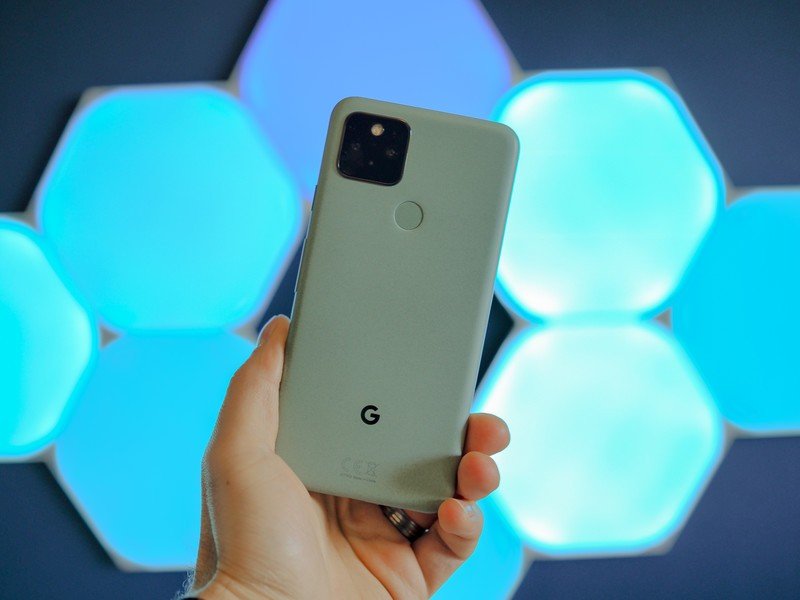
Then there's video. The Pixels have been rightly excoriated for their lackluster video, and like the call for an ultra-wide camera, Google spent some timing improving things here.
There's so much to talk about with regards to the Pixel 5's video capabilities. The Pixel 4 shot pretty mediocre footage, with virtually zero controls or settings to tweak, so any improvement is welcome here.
That all changes with the Pixel 5. Naturally, you can shoot in either 1080p or 4K at 30fps, but now there's a 60fps option, too. Google isn't kidding around here, either: 4K60 footage is buttery smooth, and just as well stabilized as its 1080p60 or 4K30 counterparts.
The Pixel also borrows a feature we've seen in recent phones from Samsung and the like: audio zoom. With this, the Pixel 5 uses its various mics to focus in and boost the audio when you zoom in to a particular subject, reducing the background noise around it. It's a handy feature, if a bit gimmicky, but that's of course not the only new feature.
Far more significant are the new video stabilization modes; in addition to the standard setting, which uses a combination of EIS and OIS to steady your shots, you can now choose from Locked, Active, and Cinematic Pan, each with their own advantages and drawbacks.
There's no telephoto lens on the Pixel 5, but the Locked shooting mode punches in to 2X anyway, and uses the surrounding data along with stabilization to create a "locked off" shot, almost as if you were shooting with a tripod. It works surprisingly well at canceling out any hand jitters, though if you really push it, you can start to notice the perspective correction warping in the corners.
Active mode mostly seems to be a stronger version of the standard stabilization setting. It's specialized for walking shots and any sort of action moments; Google demonstrates shooting from a jet ski in the camera software.
You can shoot anywhere from 1X to 5X in this mode, though oddly, the Pixel 5 actually leans on the ultra-wide lens for this shooting mode. Because of that, the image quality is dramatically softer than in other modes, and you're limited to just 1080p, rather than 4K.
Google says this is because the wider field of view from the ultrawide camera allows a more substantial crop than the primary, giving the company's stabilization algorithms additional breathing room to work their magic.
In practice, because of the severe reduction in video quality, I'd probably stick with the standard mode unless you're really moving quickly.
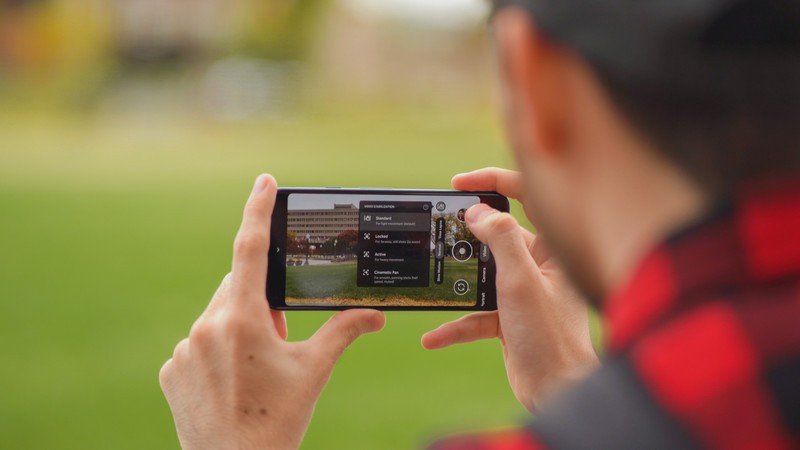
I think my favorite new shooting mode is Cinematic Pan, which automatically shoots in 60fps, then slows down and stabilizes your footage to create an ultra-smooth 30fps clip. It's a trick I used to do all the time when I had a 4K60-capable camera, since it allows you to create longer, steadier footage in a short amount of time. The results look great — just remember that not everything needs to be slow-mo. Use this mode sparingly.
Ultimately, the Pixel 5 still isn't going to top phones like the Xperia 1 III or Galaxy S21 Ultra when it comes to video. Each of these phones has far more manual control than Google offers, including the ability to shoot in various picture profiles and set manual focus. But considering how far behind previous Pixels have been, this is a huge step in giving the Pixel 5 a more well-rounded overall shooting experience, rather than just a great computational camera for photos.
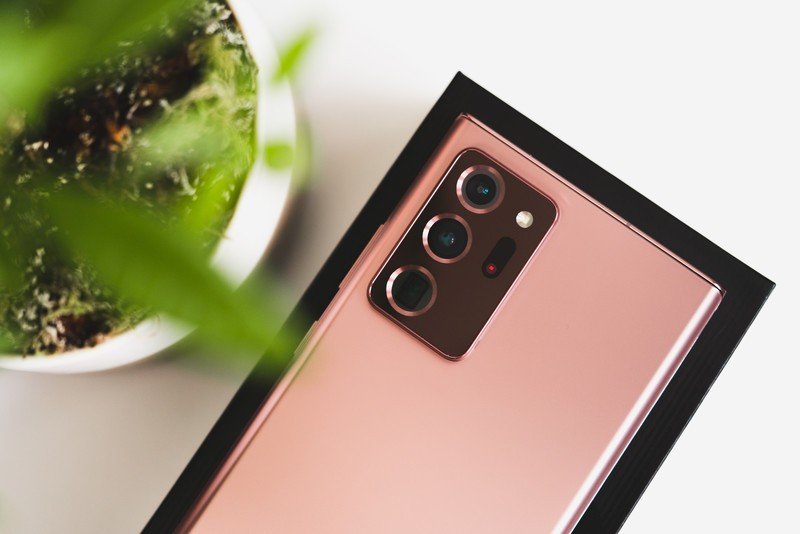
Conversely, the Pixel's still photo lead is no longer assured, either. The Pixel 5 takes incredible photos in almost every lighting condition, but 2020 and beyond have proven that throwing pixels at the problem — the microscopic kind — actually works. Phones like the Samsung Galaxy S21 Ultra and OnePlus 9 Pro have comparatively massive primary sensors, with camera bumps to match, and while neither company is as nimble as Google in using software to solve hardware-related problems, they're getting a lot closer. In fact, it feels like every phone maker is improving faster than Google, and in some areas have surpassed it just by using larger, more modern sensors.
Google Pixel 5: Battery life

In 2019, I said that the Pixel 4 was "early to bed, early demise." The Pixel 4 XL was "a night vision camera that's dead by sunset." Both were great phones completely undermined by poor battery life, enough that Google hardware chief Rick Osterloh made structural changes within the Pixel hardware team to ensure that didn't happen again.
True to its word, the Pixel 5 fixes those battery woes. There's a 4,080mAh battery inside the phone, which is 46% larger than the 2,800mAh cell in the Pixel 4, and even bigger than the one in the 4 XL. It's a feat of engineering that Google managed to get such a huge battery in this phone, and it worked: I never ended the day with under 10% battery in my time testing the Pixel 5, and each had over five hours of screen-on-time.
Source: Daniel Bader / Android Central
Source: Daniel Bader / Android Central
Some of that extra uptime has to be thanks to the inherent efficiency of the Snapdragon 765G; some due to the subtle improvements to Adaptive Battery that were introduced earlier in 2020 with the Pixel 4a. But mostly it's because Google made the right decision to put a big honking cell in a phone with a relatively dim 1080p AMOLED panel.
Google's also got one additional ace up its sleeve, though I'll admit I rarely use it: Extreme Battery Saver. Taking the protocols of the Pixel's regular Battery Saver mode and ratching it to 11, Extreme Battery Saver essentially cuts off apps from doing anything in the background. They're only working when you have them open in front of you.
That means email or chat clients won't push new messages, and important background services like Covid-19 Exposure Notifications won't operate correctly unless whitelisted. It's a severe solution to the problem of battery longevity, and while I doubt it'll get much use in pockets of people who charge every night, it's certainly nice to have.
Also nice to have is wireless charging, an accomplishment Google made through the aluminum frame by literally carving a hole in the backplate. You obviously can't tell the hole is there — it's filled in with a resin and then painted over — but it's an engineering feat all the same. Wireless charging and water-resistance were the two features I really missed from the Pixel 4a, and I'm so glad they're here.
Google Pixel 5: Software
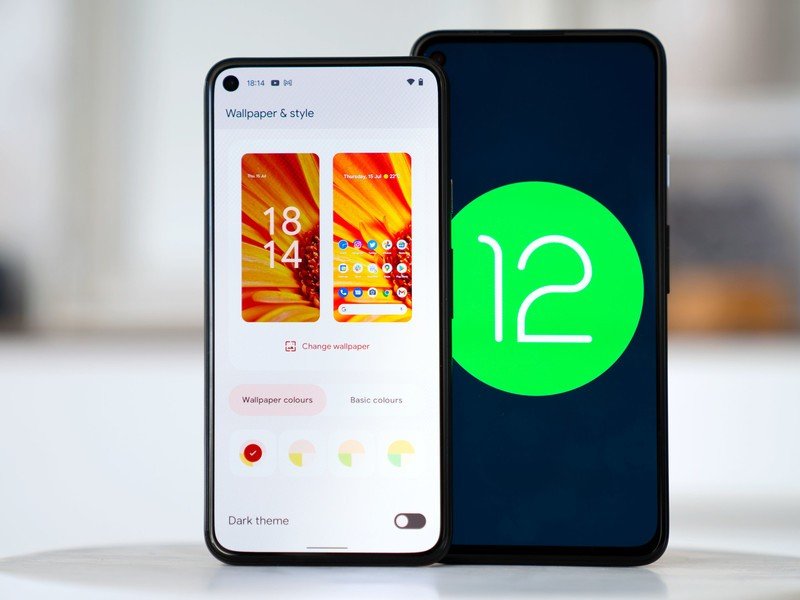
On the software front, there are only a few important things you need to know: the Pixel 5 comes with three years of updates (though it should be five) with monthly security patches and quarterly(ish) "Feature Drops."
And everything that was once exclusive to the Pixel 5 and Pixel 4a 5G eventually came to older Pixels. That's the trajectory of almost every Pixel-exclusive feature and likely won't change any time soon.
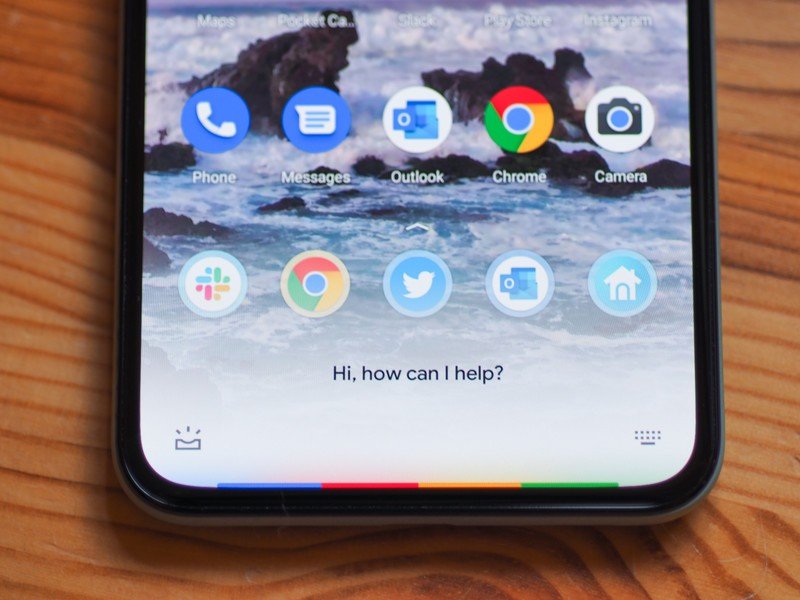
Of course, the Pixel 5 shipped with Android 11, and is upgradeable to Android 12, bringing with it a serious visual overhaul thanks to the new Material You design language.
With Material You, Android is more colorful, with apps decorated in a selection of accent colors pulled from the Material palette to compliment your home screen background. It's a great way to make the most personal computer you own more personal to you, with a choice of subtle or punchy accents to match the feel of your background. Android 12 is curvier and chunkier, with a focus on big, rounded corners and large, meaningful text headers. It's a natural evolution of the Material Design aesthetic that started way back with Android 5.0 Lollipop.
Android 12 brings a big visual overhaul to the Pixel 5, but there's more to see besides that.
So, on Pixels, Material You in Android 12 really is a whole new UI. It's still basically the same old Android under the hood, but the aesthetic changes are substantial, making it feel fresh and modern.
But the changes in Android 12 are more than just a fresh coat of paint. The new privacy dashboard helps you keep tabs on which apps are using sensitive permissions like location, microphone, and camera, and how often they're using them. When an app is tracking where you are or using your camera or mic, you'll see a little dot or icon up top in the status bar to let you know what's going on, and which app is responsible.
And for location in particular, Android 12 lets you control how much information apps can get. Whenever you're choosing to give an app this permission, you can decide whether it gets to know precisely where you are, or just an approximate location. It's a continuation of the trends started in Android 10 and Android 11 where you're able to give apps enough data to work properly without handing over more personal data than you need to.
There are a couple of interesting Pixel 5-only features available, too. An updated version of the Recorder app now lets you edit sections of a recording by deleting the generated text. I'm italicizing that because it's so freaking cool. Google is so confident in its transcription accuracy that it's willing to use it to reverse engineer the waveform. Just incredible.
Also neat is Hold for Me, a service that lets Google's Duplex AI spend time waiting for a customer service representative on your behalf.
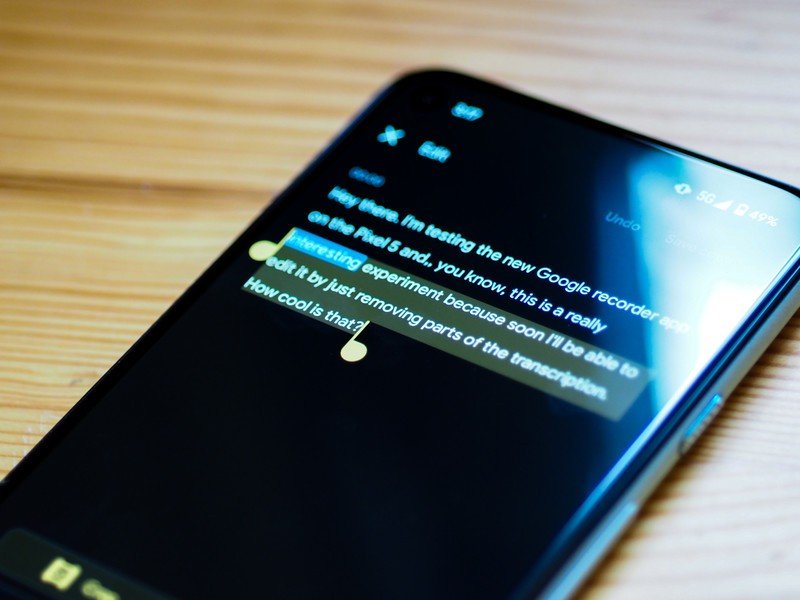
Google's Pixel software experience is underappreciated. Even as companies like Samsung, OnePlus, Oppo, and others have slowly come to realize that simplicity and fluidity are almost always preferable to a smartphone user than an abundance of choice, Google still stands alone in trying to ship features instead of options.
After more than a decade of Nexus and Pixels, it may seem trite to say it, but you really don't understand just how enjoyable it is to use Android on a Pixel until you actually use one.
Google Pixel 5: Do you need to care about 5G?
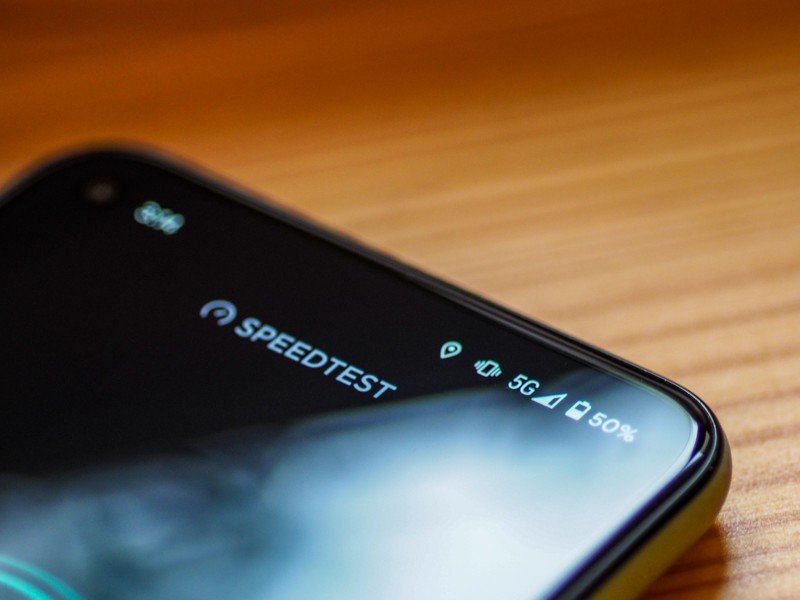
One of the marquee features of the Pixel 5 is its support for 5G. Here in Canada, our carriers use sub-6Ghz 5G, which gives the phone speeds roughly equivalent to a decent LTE connection. That said, I retained a solid 5G connection the entire time I used the Pixel 5, and the experience was solid throughout. Even in late 2021, this remains one of the better values in 5G phones on the market outside of the Pixel 4a 5G.
In the U.S., things are a bit different: you're essentially paying a premium to buy a phone that includes Verizon's millimeter-wave 5G bands, which undermines some of the value Google is trying to achieve, especially if you don't plan to use the phone on that carrier.
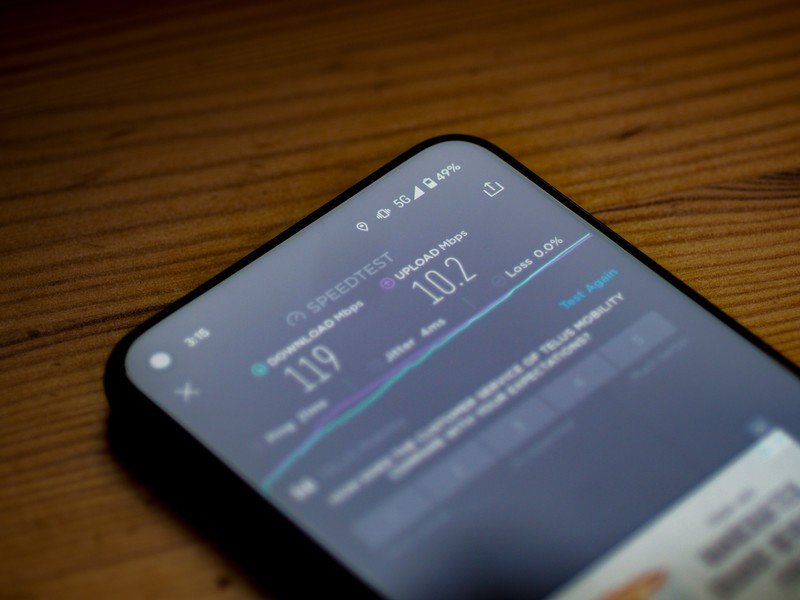
And while Verizon is expanding its 5G network considerably lately, and Google is one of its longtime partners, it's still a little frustrating, especially when you know the phone could go for $100 less (that's what the exchange rate works out to when you factor in the price of the Pixel 5 in countries where mmWave 5G isn't a thing).
Don't buy this phone because it has 5G; buy it in spite of 5G.
Of course, 5G will be consequential in the future even if it isn't today, and its presence is going to be a selling factor for devices through sheer force of marketing will — every phone vendor, carrier, and chipmaker has been hammering its importance to the future of mobility, even if that reality isn't yet realized. At this point, I'd say the addition of 5G in the Pixel 5 is a necessary evil; that Google decided to make a single version of the phone for U.S. and increase the price by $100 because of it, was the wrong move.
Google Pixel 5: Lightning round FAQ

Would you buy this over the Pixel 4a 5G?
I've been thinking about this question a lot lately, mainly in relation to whether the Pixel 5 provides enough value to justify its price tag, and I've come to the conclusion that it all depends on how much value you assign to some of Google's minor quality-of-life improvements, like the aluminum frame, like the Pixel 5's IP68 water resistance, and perhaps most of all, wireless charging.
I think that potential Pixel 5 owners would be much better served if there were two versions, a lower-priced model with sub-6 5G and a Verizon-specific model at a higher price, similar to the breakdown between Pixel 4a 5G models.
That said, as Hayato Huseman pointed out in his Pixel 4a 5G review, it's a great phone that's sort of painted into a corner by the Pixel 4a and Pixel 5. It's actually kind of a bargain, but it doesn't scream at you with value like the 4a or features like the Pixel 5.
How are the haptics?
So I originally wrote that the haptics are unchanged from previous models, but I'm wrong about that. There's a slight difference in quality between the Pixel 3 and 4, which had very clean and precise haptics, and the Pixel 5, which is still clean but a little less precise than on previous years. It's not a huge deal — it took me a few days to realize it — but it's definitely not the same motor as on the Pixel 4, which is disappointing.
How does the speaker-behind-the-display work?
There's a transducer behind the OLED panel that vibrates the entire screen, causing it to produce sound. As I wrote above, the sound is thin and influences the balance of the stereo speakers, but the advantage is that you can put your ear anywhere on the glass and hear the caller on the other end of the phone. I'd rather have a proper front-facing speaker/headpiece, but this isn't a bad solution.
Does the reverse wireless charging work as advertised?
Yep, like Samsung's Wireless PowerShare it needs to be explicitly enabled (and I recommend using a quick tile to do that), but once it's on you can turn the phone over and place a pair of earbuds or a Qi-enabled smartwatch (or another phone, if you're fancy like that), and it charges. Up to 5W maximum, though, so don't expect miracles.
How's the Sorta Sage color?
Glad you asked: it's probably my favorite phone color... maybe ever? I love, love, love it. Green was very in throughout 2020, between Samsung's Mystic Green on the Galaxy Note 20 to Mint Green on the Galaxy S20 FE to the new Aquamarine Green on the OnePlus 8T.
How's the official Fabric Case?
Like all Pixel cases in recent years, it's not the best Pixel 5 case, but it's pretty nice. It comes in a range of colors, and Google's really nailed the fit and finish; this thing fits like a glove without adding too much bulk. My primary concern is that fabric can pick up stains and smells pretty easily, so you'll want to be vigilant about cleaning it with soapy water when it touches something it's not supposed to.
Google Pixel 5: Competition

There's no question that the Pixel 5 debuted in a very crowded marketplace, likely during the worst time of year to release a phone. Apple released four new iPhones within a few weeks of the Pixel 5, including the iPhone 12 mini that started at the same $699 price. And Samsung had just released the superlative Galaxy S20 FE, while the OnePlus 8T offered a lot of value for just $50 more, at $749.
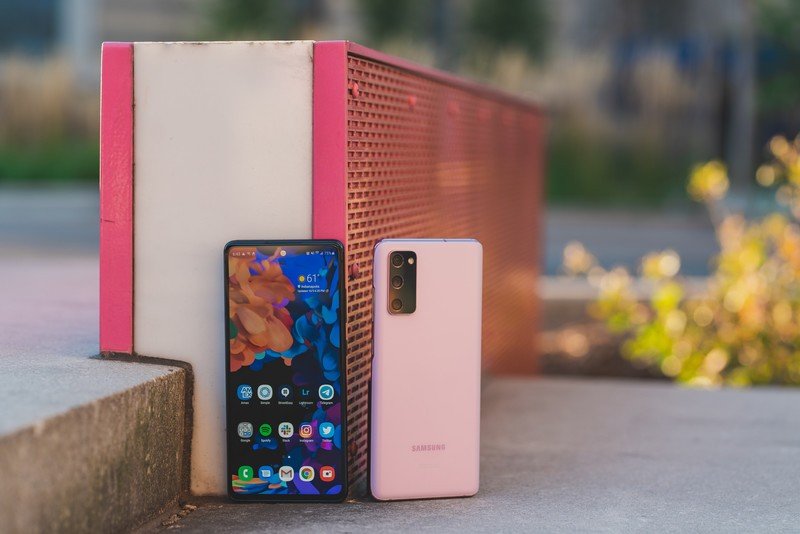
Since its release, the competition has only grown, with perhaps the most direct contender being Samsung's similarly compact Galaxy S21, which launched at $799 but can often be found for the same $699 on sale. Of course, there's also the OnePlus 9 in roughly the same price range if you're fine with a plastic build — it's an excellent phone in its own right with a 120Hz display and surprisingly solid cameras.
And then there's Google's own Pixel 5a — provided you're in the U.S. or Japan — which offers the core experience of the Pixel 5 for less.
In previous years, we were forced to pit the Pixels against the best phones from Samsung, Apple, Huawei, and others, and the consensus tended to split along specification fault lines: if you value power, go for another brand; if you value finesse, get a Pixel. The Pixel 5 fails to advance things on a technology front at all — in fact, it's mostly a regression — so it's leaning far more on finesse than ever. But even that story is slightly undermined by the excellent Pixel 4a and Pixel 4a 5G, phones that cost $350 and $200 less than the Pixel 5, respectively.
At $699, it was pretty difficult to make the case for the Pixel 5, even after we've gushed about it for damn near 6,000 words. In late 2021, with refurbished prices around $500, it's an easier sell. It's just a shame this model is now so difficult to find, and likely to be phased out post-Pixel 6.
Google Pixel 5: Should you buy it?
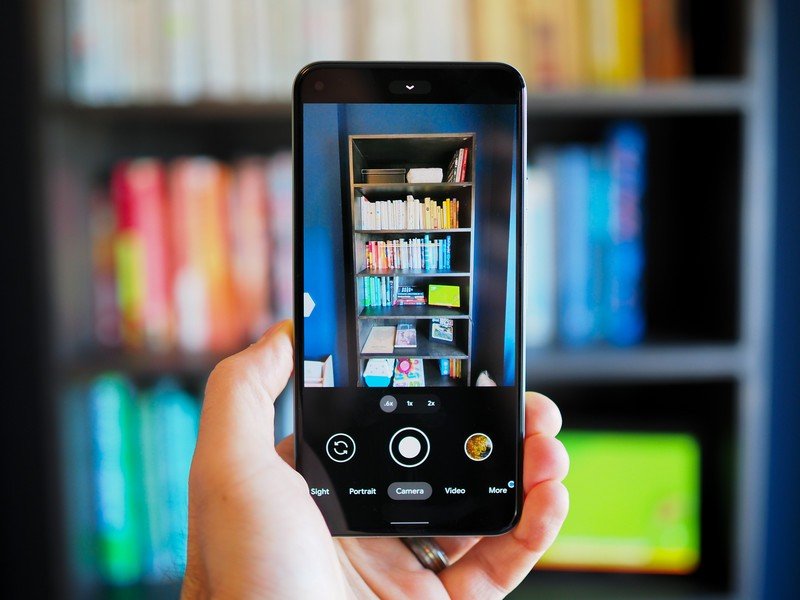
Who is the Pixel 5 for?
Someone who loves smartphone photography. The Pixel is truly a camera first, and despite not making huge leaps over previous Pixels, this is still the best photography experience on Android.
Someone who just wants to keep things simple. The Pixel experience is unrivaled, and there's just something about using one that feels fluid and natural.
Someone who values security. Pixel phones are the first to receive new platform updates and security patches, and the Pixel 5 will receive three years of each.
Who isn't the Pixel 5 for?
Someone who wants the latest and greatest specs. The Pixel 5 is just in a different category than previous Pixels and isn't trying to compete with the latest iPhone Pros and Galaxy S models of the world. This is a mid-range phone with a price to match.
4.5 out of 5
After the Pixel 6 arrives, the Pixel 5 may no longer be the best Pixel ever. But it is still a really solid little phone. It fixes a number of the issues raised in the flawed-but-ambitious Pixel 4 line while introducing genuinely new, useful camera features, though many of them quickly trickled down to older Pixels. It may have minor downgrades over the Pixel 4, especially in the processing speed and biometrics department, but the battery improvements alone make up for it.
If you're in the market to upgrade your phone this year and don't want to get into the stinging nettles of $1000+ smartphones, you could do a lot worse than the Pixel 5. But it's no longer a clear winner in any category — not for price, not for software, not for performance, and not even for cameras. Instead, it rests near the top of all of them, amalgamating into an experience that I prefer over basically every other Android phone. The difference this year is that there are so many good alternatives at practically every other price point — two of which are made by Google itself.
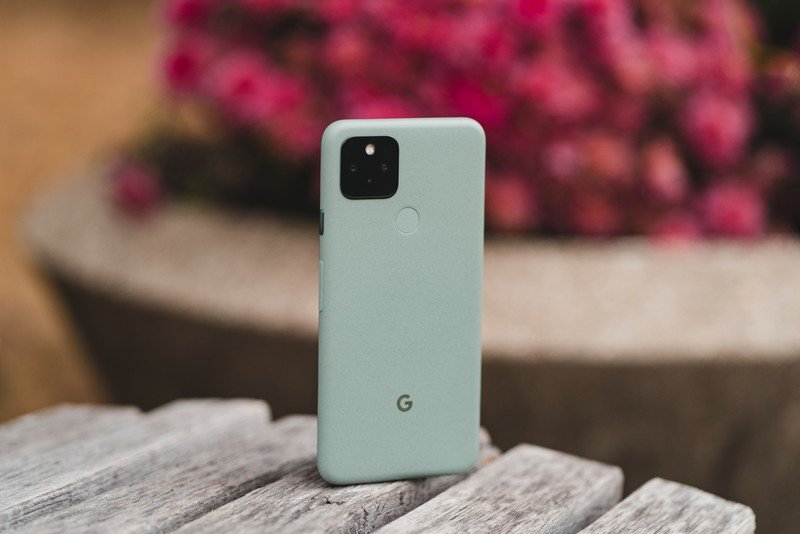
But from my perspective, having a lineup from the $349 Pixel 4a through the $449 Pixel 5a to the likely $800+ of the Pixel 6 means that you can get a Google phone with incredible cameras and very good batteries, along with all of those software benefits and regular updates, without spending a lot of money.
If you happen to choose the Pixel 5, you're still getting a great little phone.
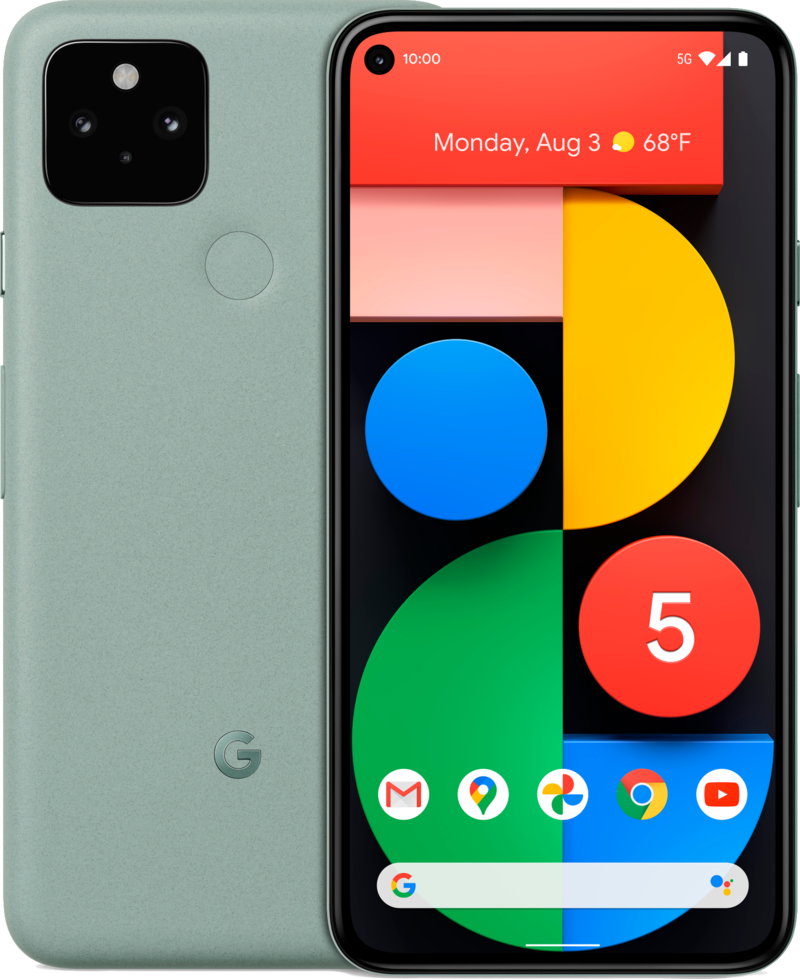
Google Pixel 5
Google didn't shoot for the moon, but it landed among the stars anyway. The Pixel 5 is one of the best and most accessible phones of 2020, offering most people everything they want and nothing they don't.
Review Changelog, October 2021
This article was originally published in October 2020. It was updated in October 2021 with the following changes:
- Updated pricing and availability (or lack thereof).
- Mentioned the upcoming Pixel 6 launch and the recently-launched Pixel 5a.
- Added Android 12 impressions.
It was updated in May 2021 with the following changes:
- Added mention of newer devices including the Galaxy S21 Ultra, OnePlus 9 Pro, and others.
- Updated with pricing changes (or lack thereof).
- Added changelog.

Daniel Bader was a former Android Central Editor-in-Chief and Executive Editor for iMore and Windows Central.
